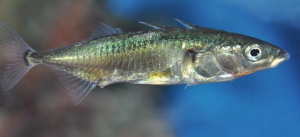Panel convened to evaluate nature-based solutions for managing stream temperature

SCCWRP and its partners have convened a panel of scientific experts to investigate how to optimally incorporate natural features and processes into stream management to help offset increased temperatures from wastewater discharges in the upper Santa Clara River – a proof-of-concept investigation that could be widely applicable to other Southern California streams facing temperature management challenges.
The three-member expert panel, which will hold its first in-person meeting in May, is exploring how different combinations of nature-based solutions could be deployed to optimally mitigate increased water temperatures at Southern California streams where treated wastewater effluent is being discharged. Nature-based solutions refer to any landscape or structural modifications designed to improve or protect ecological health by closely mimicking natural processes; nature-based solutions include some types of stormwater best management practices (BMPs) like bioswales.
Among the nature-based solutions that will be assessed by the panel are diverting wastewater effluent into groundwater to naturally cool it, instead of discharging it directly into streams, as well as routing it through constructed wetlands to cool the water before returning it to the stream. Nature-based solutions are viewed as an important alternative to traditional engineered solutions, as they have less harmful environmental effects while providing co-benefits like increasing green space for both humans and wildlife.
The investigation, which was initiated by the Los Angeles County Sanitation Districts, is motivated by a new generation of wastewater discharge permits that have lowered the maximum temperature at which receiving water is required to be maintained from 86 to 80 degrees Fahrenheit. The new permits also have removed an exemption that allowed for higher water temperatures during warmer weather.
The lower maximum allowable temperature is more difficult to reach because wastewater effluent is typically discharged into streams above the stream’s ambient temperature.
Although the panel’s charge is to offer recommendations for managing effluent discharges, the project represents an early foray by Southern California into developing best practices for managing stream temperatures – a challenge that is expected to become pervasive as water temperatures rise in response to climate change.
The decision to convene the panel is an evolution of a multi-year, ongoing investigation probing how water temperature affects the health of sensitive aquatic life in Southern California streams receiving wastewater discharges.
The multi-year set of investigations encompasses three watersheds – Los Angeles River, San Gabriel River and Santa Clara River – although the expert panel will focus on identifying appropriate combinations of nature-based solutions in the Santa Clara River watershed only.
The Santa Clara River – one of the few remaining natural river systems in Southern California – is a shallow stream especially vulnerable to warming air temperatures. The upper Santa Clara River watershed is home to the unarmored three spine stickleback, a State and federally listed endangered fish that is also one of 34 fully protected species in California. Certain species like the unarmored three spine stickleback depend on specific water temperatures to survive.
Although the use of nature-based solutions for managing stream temperature is a relatively new concept in arid and semi-arid regions like Southern California, nature-based solutions already are routinely used across the region to tackle other types of environmental issues – from building living shorelines for combatting sea level rise, to installing bioswales and other types of stormwater BMPs to reduce pollutants in stormwater runoff. Nature-based solutions also are used to reduce flood risks in regions outside of California that receive regular rainfall.
The panel, which is made up of national experts on stream temperature management, has been tasked with evaluating how using nature-based solutions are expected to perform in Southern California’s semi-arid environment, and evaluating if there are key knowledge gaps in stream temperature management that could be closed with future pilot studies.
The expert panel has been meeting virtually since January, and will convene in person for the first time in May. The final report with the panel’s recommendations is expected to be published by the end of 2024.
For more information, contact Dr. Eric Stein.
More news related to: Ecohydrology, Top News